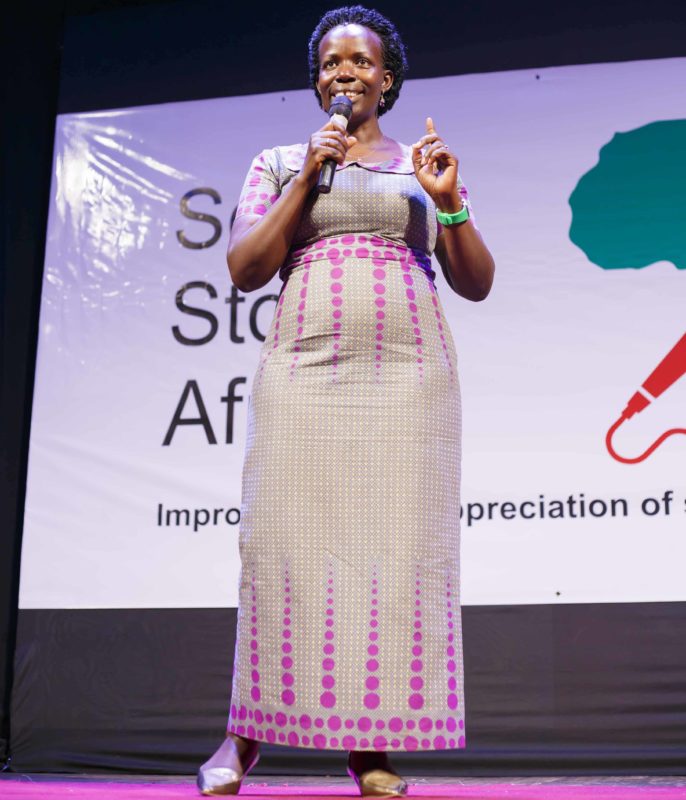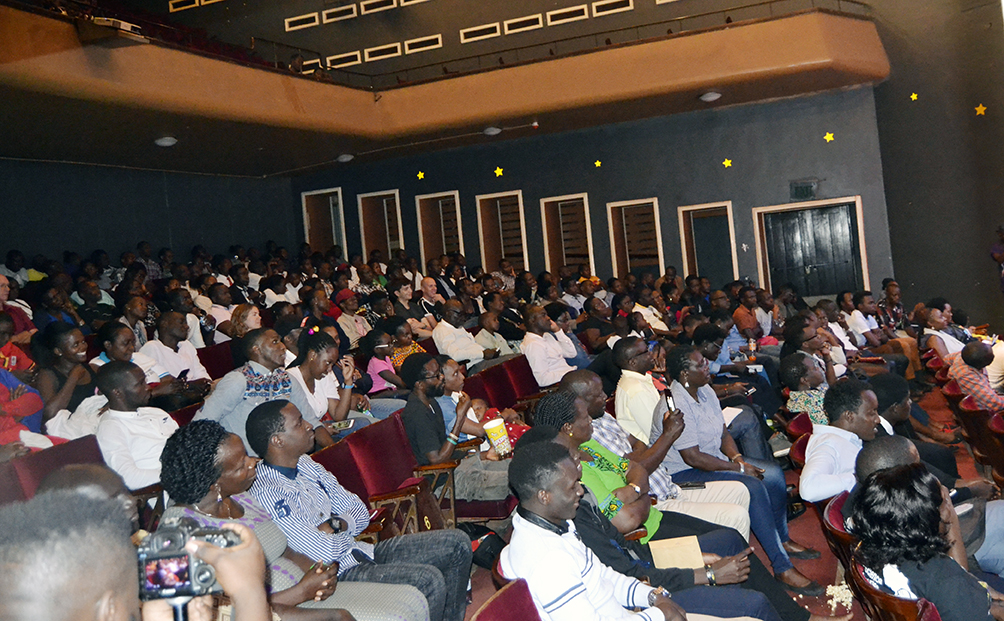Science Stories Africa (SSA), the brainchild of emerging fire-brand science communicator Patricia Nanteza, shifted the usual fiction stories shared in Uganda’s National Theatre into fact-packed tales told by local scientists themselves.
The event — the first of its kind in the theatre’s 60-year history — was created to provide a platform for African scientists to tell the story of how technology offers solutions to African challenges.
“The West is the leader in content creation, and Africa tends to simply consume and believe whatever narrative comes from there,” said Nanteza, a Ugandan. “This has been evident in the GMO debate, with some African nations saying no to genetically engineered crops simply because a very vocal section of the West is against it.”
When Nanteza became aware of this “opinion damping,” she wanted to find a way “I could contribute to changing the narrative around technology adoption, especially in agriculture. That is when I got the idea of Science Stories Africa. We want to enable the public to appreciate the innovations and gradually adopt them.”

Nanteza started the journey with five scientists who are actively advancing solutions to problems in their own communities. They include Dr. Priver Namanya, a biotechnologist at the National Agricultural Research Laboratories (NARL) in Kawanda; Dr. Wilberforce Tushemereirwe, senior banana researcher and director of NARL; Allan Muhumuza, an electrical engineer with Kiira Motors Corp.; Alphonse Candia, an engineer with the Ministry of Agriculture’s Mechanization Resource Center in Namalere; and Martin Tumusiime, a computer science student from Makerere University and co-founder of Yo-Waste, a waste disposal mobile application.
The theme for the event was “I almost gave up,” and Namanya broke down the complicated plant science that informs her research into a story that the audience could relate to.

“Banana was being wiped away by all kinds of pests and diseases,” she said. “Weevils, nematodes, fungi, bacteria, and in different measures, they caused havoc to plantations across Uganda. Conventional breeding had delivered some solutions and emerging challenges needed a better technique, like genetic engineering. Scientists in Uganda had started to genetically engineer bananas to resist nematodes and banana bacterial wilt, but cells from Uganda’s matooke (East African highland bananas), could not easily regenerate into a plant.”
According to Namanya’s published study, although matooke “does not normally obey conventional instructions” it can now be improved through genetic engineering. However, her success with matooke didn’t come easily.
“My team and I tried severally to regenerate matooke cells and failed. I reached a point of total frustration and applied for a job in another organization,” Namanya recalled. The person who was considering her for the new position had been following her banana research work and offered some advice: “You are a bright lady, but I am not giving you this job. Go back to Kawanda; that’s where your career is.”
She also drew inspiration from a saying that had been part of her youthful education.
“When I was a child, my mother sent me to the cupboard to get sugar and I failed to open it. When I reported that to her, she said, ‘What has the cupboard told you?’” Before Namanya could respond, her mother added: “What does not speak should not defeat you.”
This teaching drove her to pioneer a cell-suspension system for regenerating EAHB from a cell, because she resolved that the matooke cell that never spoke was not going to defeat her.
Because of Namanya’s work, scientists in Uganda and elsewhere are now able to improve EAHB using genetic engineering. Tushemereirwe is one of the scientists who built on her research to develop matooke that produce more beta carotene than the current banana varieties in Uganda.

Beta carotene helps the body to produce vitamin A, which is deficient in the diets of those who live in his region of western Uganda. Data from UNICEF show that vitamin A deficiency causes death from preventable childhood diseases like diarrhea, and up to one-third of those in need of vitamin A supplementation cannot access it.
“When I was growing up, more children used to die from my community,” Tushemereirwe recalled. “The first burial I ever attended was of a child whom I knew. I kept wondering why only children were dying and not adults.” He later discovered children in his village were dying because of low immunity resulting from dietary over-reliance on matooke, which is deficient in beta carotene.
“When I learnt that vitamin A deficiency caused the death of my friend, I felt my usefulness in society would be realized if I provided a solution,” Tushemereirwe said. His chance came when the Bill & Melinda Gates Foundation called for proposals to provide solutions to the world’s greatest challenges, including vitamin A deficiency. “This was a great opportunity for us. Together with colleagues from Queensland University in Australia, we managed to develop banana enriched with beta carotene.”
All the scientists who told their stories were inspired by the urgent need to solve problems in their communities. Muhumuza, an electrical engineer, is part of a team that developed Uganda’s first electric bus to ease traffic jams and air pollution in the cities. As a first-time father, he wants his three-month-old baby girl to grow up in a less-polluted environment.
Candia, a mechanical engineer, shared how he grew up eating smoked fish because his mum had told him that eating it contributed to the academic excellence of his elder brother, a medical doctor. He later learned that the smoking method used to prepare this delicacy exposed consumers to cancer-causing compounds. He went on to develop a fish smoking kiln that filters the smoke, removing the cancer-causing compounds in the process.
Tumusiime, sickened by all the uncollected rubbish at his aunt’s place, where he stayed during school vacations, designed a mobile application that would ensure particular wastes are taken up by specific collectors who recycle plastic and use garbage on farms as agricultural manure.
These compelling science stories likely would have remained with the inventors or hidden somewhere in journals, if not for the novel concept of Science Stories Africa. Instead, they entertained and educated the ordinary people who usually come to the theatre expecting fiction.
Photos by Isaac Ongu
